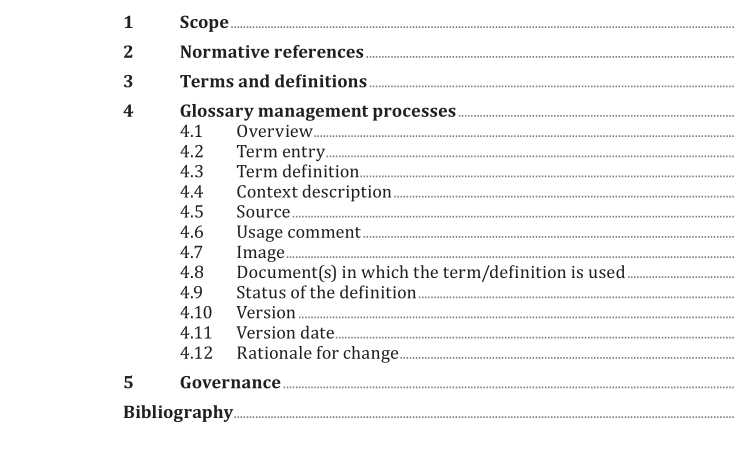ISO 17439:2022 pdf download – Health informatics — Development of terms and definitions for health informatics glossaries.
3.9 term linguistic representation of a concept being defined in the glossary Note 1 to entry: In this document, the word “term” is used to indicate term entry. Note 2 to entry: A term can contain symbols and have variants, e.g. different forms of spelling. 3.10 family of terms group of terms which define the attributes of related concepts. Note 1 to entry: The terms in the family assists in the definition of other members of the family. EXAMPLE The family of terms associated with Health records. The related terms in the family include, healthcare record, electronic health record, personal health record, medical record. Health records have attributes with include the specification of their ‘ownership’, e.g. medical records are owned and maintained by healthcare providers, while personal health records are maintained by the person to whom they pertain. Another common attribute is the format of the record, e.g. held in digital form – a digital health record. The term health record can be considered the least specific, healthcare records relate to the care provided in relation to health and could be considered a synonym of medical record, while electronic health record implies a format or functionality of the health record. Once health record is defined, it is easier to define healthcare record and electronic health record, as it is not necessary to define the base from which the definition begins. Note 2 to entry: Guidance is provided later in this document on what terms are appropriate to a family. It is acknowledged that further testing of this process will be required through the implementation of this document. 4 Glossary management processes 4.1 Overview A term can occur many times, each time with different identifying characteristics/metadata. These characteristics include: the definition of the concept that the term expresses (see 4.3), the description of context in which that definition applies (see 4.4), the original source of the definition (see 4.5), examples and comments on the use of the term (see 4.6). To support harmonization, definitions in health informatics glossaries should be linked to the documents in which they are used. This can include a glossary of terms used by an organization or terms used in published standards (see 4.8). Metadata requirements to support glossary maintenance include categories for the status of the definition (see 4.9) and rationale for modifications made (see 4.12). Definitions are linked to documents owned or created by standards development organizations. In the SKMT Glossary tool, organizations can determine their definitions and create their own glossary by searching by organization for terms linked to their documents. The processes of the SKMT Glossary are not defined here, as they are provided in detail in the User Guide. The process for harmonization of terms/definitions in each individual standards development organization is different. Procedures are currently in trail and administered by the SKMT Governance Committee of the Joint Initiative Council of the Health Informatics Standards Development Organizations. 4.2 Term entry The term is the word or group of words being defined in the glossary. An organizational health informatics glossary should include an entry for any term that would normally be included in terms and definitions or glossary section/s of a document or product. More extensive explanations of the principles and processes for development of quality definitions are provided in ISO 704. A summary of these requirements is provided here. ISO/IEC 2382 provides guidance on abbreviations, definitions, and representation, and though this relates more specifically to terminologies in general.
ISO 17439:2022 pdf download – Health informatics — Development of terms and definitions for health informatics glossaries






